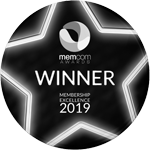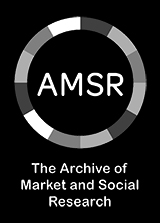MRS Silver Medal Finalists 2025
19 March 2025
The finalists for the best paper published by the International Journal of Market Research last year have been announced, recognising academic and practitioner authors with affiliations in England, Singapore, Portugal, Australia and the USA.
In Exploring the impact of giving free food samples and loyalty cards on sustainable food choices: A stepped wedge trial in workplace food outlets authors Natalie Gold (Behavioural Practice, Verian UK and London School of Economics and Political Science, UK), Pieter Cornel, Shi Zhou, Katie Thohrnton, Rupert Riddle (Behavioural Practice, Verian UK) and Robert McPhedran (Verian, Singapore) conducted a stepped wedge trial in 29 workplace food outlets to investigate their effects on the sale of plant-based meals. Outlets were randomly assigned to three sequences that entered the intervention in the first, second, or third week of August 2022. Free samples of plant-based meals were given out in the first week of the intervention; loyalty cards were available throughout, entitling the bearer to a free meal after they had bought three. The intervention period ended in the last week of August for all outlets. The free meal could be redeemed until one month later. The results did not find statistically significant effects of the interventions compared to the baseline period and the process evaluation indicated that many participants preferred to eat their habitual meal or were unaware of the loyalty cards.
In Semiotic protocols for cultural trend analysis in strategic communication: Brand cases from the telecommunications sector authors Manuel Pinto Grunfeld and Nelson Pinheiro Gomes (University of Lisbon Centre for English Studies, University of Lisbon School of Arts and Humanities) address the relations between branding and cultural trends in strategic communication and advertising in different contexts of the The SARS-CoV-2 pandemic. First, they reviewed the concepts of branding and cultural trends. From there, it was necessary to develop a methodological proposal to articulate a connotative semiotic analysis with the semiotic square and a cultural trend mapping. The analysis was carried out through an independent and comparative reading of two-time phases: confinement (2020) and end of constraints (2022). Three telecommunications brands in Portugal act as case studies in a random and probabilistic sample of two audio-visual texts from Christmas campaigns each. Finally, a theoretical-operational triangulation is obtained between branding, cultural trends and semiotic analysis in promoting local brands that redefine spaces, social relations, and identity expression during and after the COVID-19 pandemic confinements.
The net promoter score: What should managers know? by John G. Dawes (University of South Australia) provides an overview of the various ways in which the net promoter score (NPS) is used and then canvasses four concerns raised by researchers, authors and commentators about the NPS. These relate to (1) its presumed link to business growth, (2) the assumption that low NPS scores indicate negative word of mouth, (3) the weak association between stated likelihood to recommend and actual recommending, and (4) the claim that NPS is a superior metric to customer satisfaction. The evidence pertaining to those concerns is examined. The study then discusses another problem with the NPS that many practitioners are aware of, but has not been studied. The problem is that the counting method used to calculate the NPS introduces additional variation in scores compared to mean average likelihood-to-recommend scores. This additional variation occurs both across brands in a study, as well as for the same brand over survey waves. This variation is likely to be difficult for market research providers, or those who commission NPS work, to explain. The study concludes with alternative courses of action for NPS users.
Finally Ann Schlosser’s (University of Washington, WA, USA), To recommend or not recommend is the question: Does NPS predict word-of-mouth? The Net Promotor Score (NPS) is ubiquitous, relying on a single-item question to capture consumers’ word-of-mouth (WOM). The question asks consumers for their likelihood of recommending a brand to friends and colleagues. Despite its popularity and advantages over longer satisfaction surveys, NPS has potential weaknesses. Among them are that the NPS question (1) is double-barrelled by asking in a single question for likelihood to recommend to friends and likelihood to recommend to colleagues, (2) focuses on recommendations, and thus, ignores consumers’ likelihood to spread negative WOM, and (3) ignores online WOM, which often involves recommendations to strangers rather than friends or colleagues. This paper empirically tests these three potential weaknesses of the NPS measure on the WOM conclusions derived from NPS. Specifically, three experiments vary whether NPS assesses likelihood to recommend to a friend and colleague in a single question (how NPS is currently measured) or in two separate questions. In addition, NPS is compared to responses to an explicit negative WOM question (intent to warn others about the brand). Moreover, across studies, the NPS is reported for a recent positive experience and either a recent negative experience or a recent mixed experience. NPS is also compared to likelihood to engage in online WOM in terms of posting an online review and the intended online rating. By examining these issues, this research sheds light on consumers’ interpretations of NPS, the factors that influence these interpretations, and how these factors affect NPS’ ability to predict negative WOM, online WOM, as well as satisfaction, loyal behaviour, and WOM in general.
Fellows and Certified Members can read these papers online today via the IJMR website. Other Members can request copies by emailing membership@mrs.org.uk.
The winning paper will be announced at the MRS Excellence Awards lunch on 6 June.
Get the latest MRS news
Our newsletters cover the latest MRS events, policy updates and research news.










